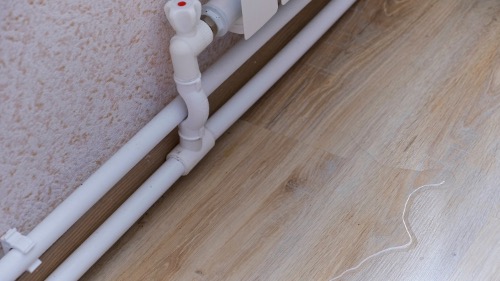We’re an affiliate
We hope you love the products featured in our articles. Just so you know, we may collect a share of sales or other compensation from the links on this page. Thank you if you use our links, we really appreciate it!
If you suspect your toilet is running, then it’s likely to cause an increase in your water bill each month. How much water do running toilets actually use?
On average, about 200 gallons of water can be lost per day due to a faulty or damaged toilet unit that continues to run. This is equivalent to flushing 50 times.
This doesn’t include the potential for damage from flooding and other more serious matters which may rise from an unchecked problem.
It pays off to investigate any issues with your toilet as soon as possible before any greater danger is at risk — let’s break down just how much water a running toilet uses.
Why Does A Running Toilet Waste So Much Water?
In order to understand why a running toilet wastes so much water, it is important to understand the basics of how toilets operate.
Toilets are made up of two primary components – the tank and the bowl. Inside the tank is a fill valve which refills with fresh water after each flush.

- Fix noisy, or slow filling fill valves with the quietest, most powerful toilet fill valve available
As well as an overflow tube that prevents the tank from overflowing.

When the toilet is running, it means that either the fill valve or overflow tube is not functioning correctly. This causes water to continuously run into your bowl and drain away without ever filling up correctly.
The amount of water wasted depends on the size of your tank, but can still easily add up to several hundred gallons per day.
Signs That Indicate A Toilet Is Running Or Leaking?
There are a few key signs to look out for:
- You hear water constantly running in the tank
- The sound of water moving through pipes when no one is using the restroom
- Water puddles around the base of the toilet
- The water level of the tank is below average
- You notice a higher than normal water bill
Tips On How To Identify And Fix A Running Toilet?
If you think that your toilet is running or leaking, there are a few steps you can take to diagnose and repair the issue.
Visual Check
Check for cracks, chips, or loose parts in the tank – if any exist, it could be an indication of a faulty part.
Clean
Clean and test all components of the fill valve and overflow tube – if there is a blockage or leak, it may be the cause of the running toilet.
Check Leaks
Check for any signs of water leaking from the tank – if there are any visible stains or discoloration, this could point to a faulty seal.

Replace Old Parts
Replace any old and worn out parts of your toilet if needed – especially things like the flapper or float arm.
- LONG-LASTING DURABILITY: Toilet flapper with solid frame replaces leaky, corroded flappers,…
Test the toilet after each step to make sure everything is working properly. It is important to stay on top of any repairs and maintenance for your toilet.
Doing so can save you a lot of money in the long run and prevent potential flooding disasters that could occur due to unchecked problems with your plumbing system.
Steps To Take To Prevent A Toilet From Running?
There are a few steps that you can take to help prevent your toilet from running:
- Check the fill valve and refill tube regularly to make sure they are free of debris or corrosion.
- Inspect the flapper and float arm for damage or wear every six months
- Periodically check the water level of your tank to make sure it is at the correct height
- Make sure that your toilet isn’t clogged and running slowly due to a blockage
- Be mindful of how you use your toilet – avoid flushing items like disposable wipes that can cause clogs
Taking the time to inspect, test and maintain your toilet is worth it in the end – not only will it save you money but also help prevent water waste caused by a running toilet.
By understanding what causes a running toilet and taking steps to prevent it, you are making an effort towards protecting the environment and conserving water.
Final Thoughts
A running toilet can be incredibly wasteful, if not addressed. It’s important to understand the basics of how toilets operate and look for signs that indicate it may be running or leaking.
There are a few steps you can take to diagnose and repair the issue, such as visually checking for cracks or chips, cleaning and testing all components of the fill valve and overflow tube, checking for any signs of water leakage, and replacing old parts as needed.
It’s also a good idea to prevent a toilet from running in the first place by regularly inspecting fill valves, flappers and float arms, checking water levels, avoiding clogs and being mindful of how you use your toilet.







Related Articles
How To Fix A Low Water Level In Your Toilet Bowl?
How To Easily Remove A Bemis Toilet Seat?
Toilet Fills Up With Water Then Drains Slowly?